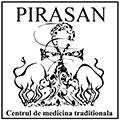The treatments employed allow the functional recovery of the patient suffering from ankylosing spondylitis by arresting the inflammatory process and restoring the articular deformities. Thus, the symptoms are reduced and completely neutralized. A special treatment is required in ankylosing spondylitis to prevent the complete loss of spine mobility, which would render the patient unable of performing physical activities properly.
A form of arthritis with chronic development, ankylosing spondylitis generates calcification of the backbone and of the costovertebral joints. In time, it causes backbone ankylosis and backbone stiffness or it turns the backbone into the so-called “bamboo spine” – a vertebral column with no flexibility and mobility at all, a thing that will make the patient an invalid. The disease begins by lumbar pains, especially after the patient has been lying for a long time. The pains are caused by inflammation of the sacroiliac articulation; they will progress either to the cervical or to the inguinal region. The ankylosis process may also affect other regions of the osseous system: the coxofemoral articulation, the shoulder and knee articulations.
The clinical picture of ankylosing spondylitis is characterized by lumbar and sacral pain and rigidity that persist even during the patient’s rest periods; long-lasting pains, located especially in the lower region; pain and rigidity in the thoracic region; diminished mobility of the backbone and decreased thoracic expansion; asthenia, anorexia, a subfebrile state, loss of weight, nocturnal sweating, irritability (manifested by ocular pains, increased sensitivity to light, eyeball reddening). Ankylosing spondylitis affects mostly men between 20 and 40 years of age.
Causes and treatment
The latest finds in genetics show a possible connection between the presence of the genetic markers HLA-B27, ARTS1 and IL23R and the action of certain environmental agents that will trigger the inflammatory process. Presence of these markers in the patient’s DNA reveals a predisposition of the body towards the disease, and not the certainty that the respective person will develop a form of ankylosing spondylitis in the future. Furthermore, a deficiently immune ground exposes the body to the action of certain pathogen agents that attack the articular regions causing various types of rheumatism, among which is ankylosing spondylitis, too. Consequently, strengthening body immunity by treatment methods that regulate the immune functions will decrease the odds of falling ill, even in patients with a genetic predisposition. Another triggering factor is an accumulation of toxins and cell residues in the place of inflammation origin. The deposits will deteriorate the local metabolic and immune activity, allowing the area to calcify and to trigger the ankylosis process.
Where the first symptoms of ankylosing spondylitis have already set in, my treatment tries to regenerate the inflamed and ankylosed regions, to restore mobility and flexibility of the backbone by dissolving the calcifications, to eliminate the cell residues and the toxins accumulated in the affected joints. At the same time, it works upon the organs involved in the activity of the immune system, restoring the immunity barrier and aiding the healing process to take place properly.

